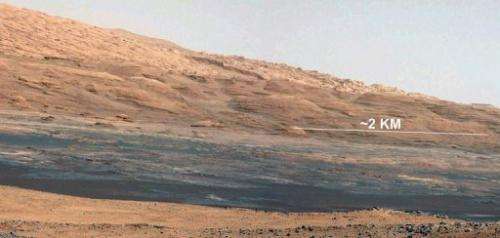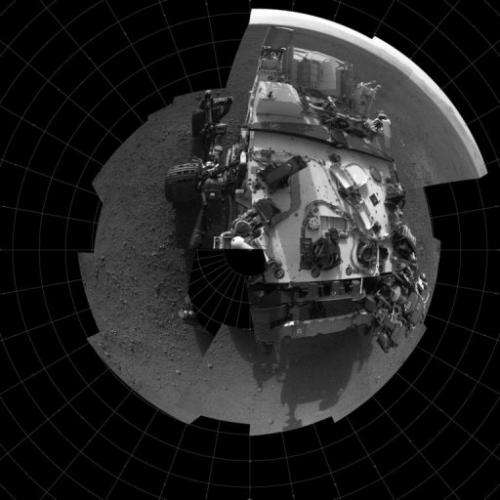Mars rover takes 'cool' detour: NASA

The US space agency NASA's Mars rover Curiosity will make a wide detour to explore a "cool" geographical hot spot on Mars, scientists said Friday.
The scientists also reported they found temperatures in the Red Planet's Gale Crater to be just above freezing, the first monitoring of Mars temperatures in three decades.
Before driving to its destination at Mount Sharp, which may contain traces of water, Curiosity will head in the opposite direction, to a spot NASA's Jet Propulsion Laboratory has dubbed Glenelg.
The Pasadena lab said the geologically-rich area marks the intersection of three kinds of terrain 1,640 feet (500 meters) from the rover's landing site.
A light-colored patch of terrain in the region indicates to scientists "a kind of bedrock suitable for eventual drilling by Curiosity."
A cluster of small craters may represent "an older or harder surface" and another spot features a patch of land resembling the rover's landing site, before the nuclear-powered apparatus "scoured away some of the surface," NASA said.
Scientists said they chose the name Glenelg because it is a palindrome -- a word read the same way backward and forward -- and the rover will need to travel back in the same direction to head toward Mount Sharp.

The Glenelg trek will be the rover's first "moderate duration drive target," Mars Science Laboratory project scientist John Grotzinger told reporters, explaining the decision to risk traveling off the planned route.
"It looks cool," he said.
Grotzinger estimated the rover's journey will take between three weeks and two months to arrive at Glenelg, where it will stay for roughly a month, before heading to the base of Mount Sharp.
Analysts have said it may be a full year before the remote-controlled rover gets to the base of the peak, which is believed to be within a dozen miles (20 kilometers) of the rover's landing site.
A photo of the lower reaches of Mount Sharp, taken from Curiosity's landing site, shows "hills, buttes, mesas and canyons on the scale of one-to-three-story buildings."
Scientists hope the hydrated minerals thought to be concentrated in the bottom half of the photographed lower reaches will "reveal the area's geological history."
The Mars Science Laboratory is expected to travel as far as halfway up Mount Sharp, a towering three-mile Martian mountain with sediment layers that may be up to a billion years old.
NASA plans to obtain photos of the summit "in a week or two."
Grotzinger noted the team's report on the Martian crater's temperature was "really an important benchmark for Mars Science."
"It's been exactly 30 years since the last long duration monitoring weather station was present on Mars," when Viking 1 stopped communicating with Earth in 1982," he said.
The $2.5 billion rover arrived on Mars at 0531 GMT on August 6.
(c) 2012 AFP





















